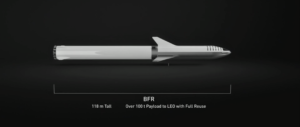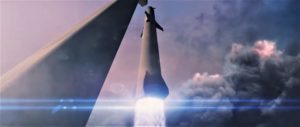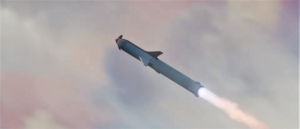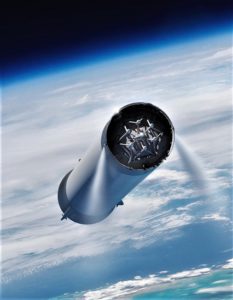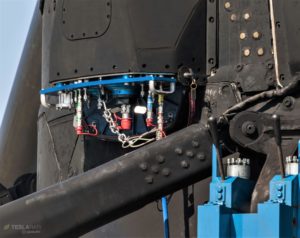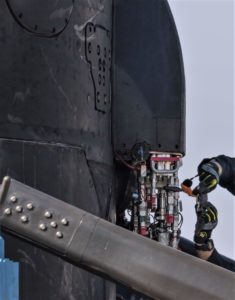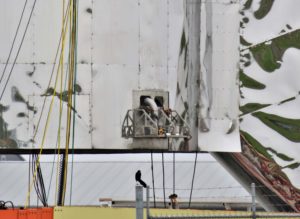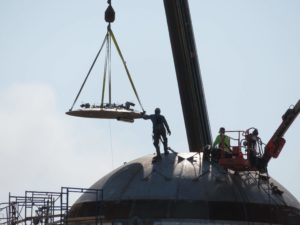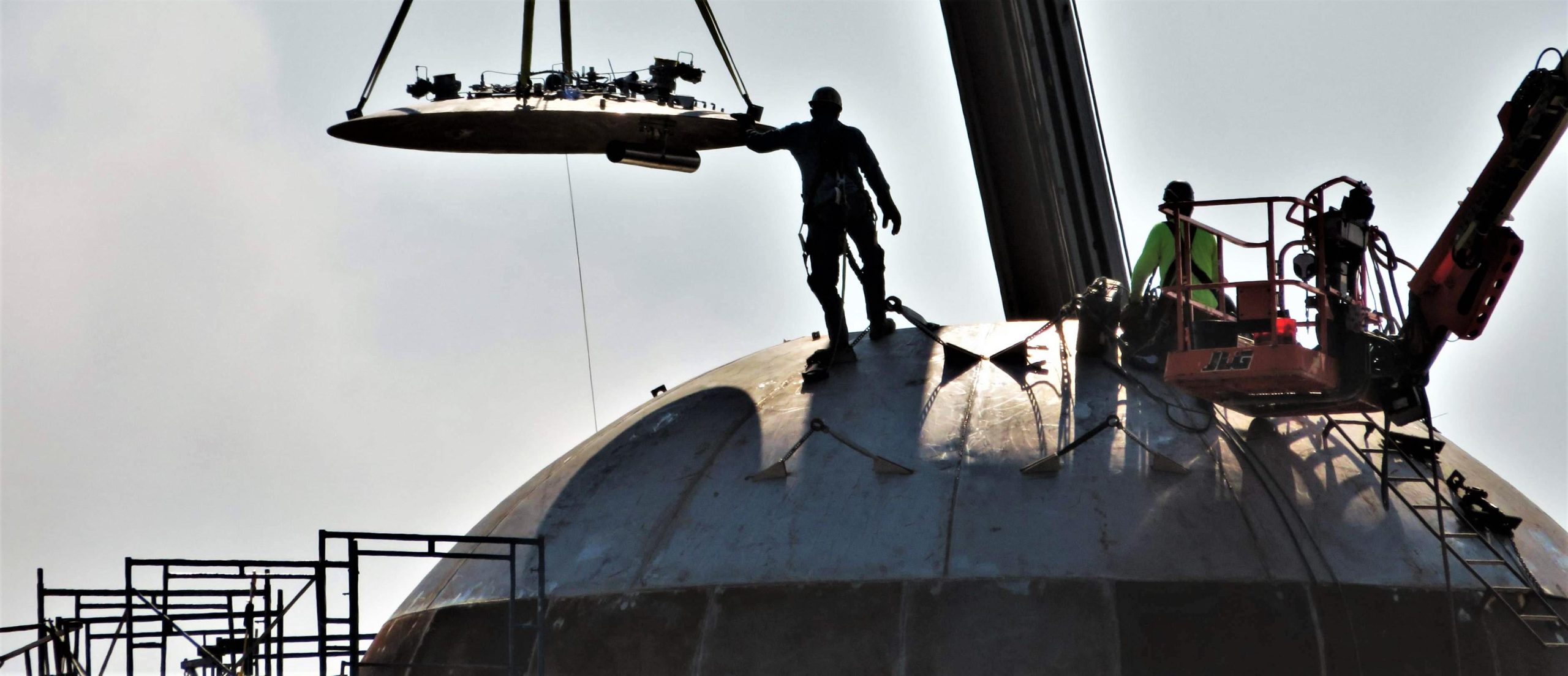

News
SpaceX’s Starship prototype is looking increasingly rocket-like as hop test pad expands
As SpaceX’s South Texas operations continue full steam ahead in pursuit of the first integrated hop tests of a full-scale Starship prototype, the company’s Starhopper and its complementary launch/hop pad are dramatically and visibly evolving on a daily basis.
This week’s progress has been signified by the installation of familiar rocket hardware on the Ship and a burst of construction – centered around pipelaying, plumbing, foundation work, and berm-building – at its pad. Just a few hundred miles north of Boca Chica, SpaceX’s team of propulsion engineers and technicians reached their own dramatic milestone, conducting the first static fire of a finalized version of the Raptor engine set to power Starship and Super Heavy (formerly BFR).
2-4-2019#SpaceX #TheFuture pic.twitter.com/0YBxk5QXD3
— Austin Barnard🚀 (@austinbarnard45) February 5, 2019
A pad fit for a Starhopper
In the last ~10 days alone (Jan 24-Feb 4), SpaceX pad construction workers and contractors transformed the former dirt mound from a generally flat, planed surface with a spattering of shipping containers and building materials into a hive of welding rigs, propellant and water tanks, major plumbing progress, shaped earth, and the beginnings of new concrete foundations. Thanks to local student Austin Barnard’s reliable drone photography, that pad-specific progress can be more properly visualized.


Taken on January 24th and February 4th respectively, the devil is definitely in the details when it comes to SpaceX’s prospective Starhopper pad development. Most notable is the progress made with the rapidly developing propellant plant and ground systems infrastructure in the left half of the images, marked by hundreds of feet of freshly-installed piping meant to support the process of fueling Starhopper with liquid methane and oxygen. For a rocket as powerful as Starhopper (even with just three Raptor engines), cooling both the propellant and the concrete launch and landing pad is no less important, visible in the shape of three large water tanks (lefthand foreground) and a smaller radiator stack (just to the right of two taller, skinnier white tanks.
Aside from the rapid rise of the first BFR propellant farm and its supporting equipment, SpaceX has progressed into the installation of a trio of concrete foundations just to the right of the dirt berm and propellant tank area. Standing as close as it is to said propellant tanks, it seems unlikely that the new foundation-laying is related to the pad (or a stand) meant to support early Starhopper hop tests, although SpaceX’s Falcon 9-era Grasshopper and F9R hop test vehicles operated about the same distance from its propellant infrastructure. SpaceX’s South Texas site also features a sort of satellite pad at its east end (the right side in attached photos) that could have a future as an integration hangar or a secondary landing zone to allow for Starhopper to perform divert tests.
- Rockets are perhaps even more capital intensive. (SpaceX)
- BFR’s booster is at least three times more powerful still than BFS at liftoff. (SpaceX)
- BFR (2018) breaks through a cloud layer shortly after launch. (SpaceX)
- (SpaceX)
- BFR’s booster, now known as Super Heavy. (SpaceX)
Depending on whether SpaceX actually intends to develop the land shown above into an actual full-scale launch facility for BFR (Super Heavy and Starship), it could also remain generally unchanged until Starhopper’s hop test program has been run to completion, at which point everything seen above would likely be rebuilt from scratch to accommodate for any drastic changes in function. SpaceX’s Boca Chica might simply be too small to support a pad capable of launching Super Heavy (nearly twice as powerful as Saturn V at full thrust), measuring in at considerably less than ~10 acres of usable area compared to LC-40’s ~20 acres and Pad 39A’s ~50+ acres. CEO Elon Musk has also hinted at using a giant floating platform for early orbital BFR launches, although that might prove even harder (and more costly) than building a traditional land-based pad.
Becoming a rocket
Meanwhile, the aft engine/fin/tank section of SpaceX’s Starship prototype (unofficially nicknamed Starhopper) has experienced a stream of hardware additions and improvements, modifying its relatively awkward and unfinished steel base with what appear to be Falcon 9-sized quick-disconnect umbilical panels, a functional propellant tank header, and mounting hardware for carbon-overwrapped pressure vessels (COPVs). By using hardware that is proven and easy to manufacture, SpaceX can save a huge amount of time that would otherwise need to be spent engineering subassemblies that (at risk of undervaluing the challenge) are generally known-quantities – more a matter of time and effort than an actual technical hurdle.
- B1048’s second umbilical panel (blue for oxygen). (Pauline Acalin)
- Falcon 9 B1048 displays one of two umbilical panels (red for kerosene) after its first launch. (Pauline Acalin)
- Starhopper’s partially completed umbilical panel as of Feb. 4th. (NASASpaceflight – bocachicagal)
- A SpaceX technician or contractor is pictured here cutting out sections of Starhopper’s steel hull to route umbilical panel piping. (NASASpaceflight – bocachicagal, 02/03/19)
- Starhopper also had a tank header installed on February 5th, complete with pressure regulation and propellant feeding hardware. (NASASpaceflight – bocachicagal)
While they are clearly still in a rough, unfinished form, Starhopper’s umbilical panels are already easy to recognize when compared alongside Falcon 9’s iconic red and blue panel pairs. In essence, whereas Starhopper has been a largely unknown quantity with no familiar aspects since it began to come together late last year, the Starship prototype has recently had hardware installed that is finally revealing subtle SpaceX signatures in its design and assembly.
Check out Teslarati’s newsletters for prompt updates, on-the-ground perspectives, and unique glimpses of SpaceX’s rocket launch and recovery processes!

News
Tesla is not sparing any expense in ensuring the Cybercab is safe
Images shared by the longtime watcher showed 16 Cybercab prototypes parked near Giga Texas’ dedicated crash test facility.

The Tesla Cybercab could very well be the safest taxi on the road when it is released and deployed for public use. This was, at least, hinted at by the intensive safety tests that Tesla seems to be putting the autonomous two-seater through at its Giga Texas crash test facility.
Intensive crash tests
As per recent images from longtime Giga Texas watcher and drone operator Joe Tegtmeyer, Tesla seems to be very busy crash testing Cybercab units. Images shared by the longtime watcher showed 16 Cybercab prototypes parked near Giga Texas’ dedicated crash test facility just before the holidays.
Tegtmeyer’s aerial photos showed the prototypes clustered outside the factory’s testing building. Some uncovered Cybercabs showed notable damage and one even had its airbags engaged. With Cybercab production expected to start in about 130 days, it appears that Tesla is very busy ensuring that its autonomous two-seater ends up becoming the safest taxi on public roads.
Prioritizing safety
With no human driver controls, the Cybercab demands exceptional active and passive safety systems to protect occupants in any scenario. Considering Tesla’s reputation, it is then understandable that the company seems to be sparing no expense in ensuring that the Cybercab is as safe as possible.
Tesla’s focus on safety was recently highlighted when the Cybertruck achieved a Top Safety Pick+ rating from the Insurance Institute for Highway Safety (IIHS). This was a notable victory for the Cybertruck as critics have long claimed that the vehicle will be one of, if not the, most unsafe truck on the road due to its appearance. The vehicle’s Top Safety Pick+ rating, if any, simply proved that Tesla never neglects to make its cars as safe as possible, and that definitely includes the Cybercab.
Elon Musk
Tesla’s Elon Musk gives timeframe for FSD’s release in UAE
Provided that Musk’s timeframe proves accurate, FSD would be able to start saturating the Middle East, starting with the UAE, next year.

Tesla CEO Elon Musk stated on Monday that Full Self-Driving (Supervised) could launch in the United Arab Emirates (UAE) as soon as January 2026.
Provided that Musk’s timeframe proves accurate, FSD would be able to start saturating the Middle East, starting with the UAE, next year.
Musk’s estimate
In a post on X, UAE-based political analyst Ahmed Sharif Al Amiri asked Musk when FSD would arrive in the country, quoting an earlier post where the CEO encouraged users to try out FSD for themselves. Musk responded directly to the analyst’s inquiry.
“Hopefully, next month,” Musk wrote. The exchange attracted a lot of attention, with numerous X users sharing their excitement at the idea of FSD being brought to a new country. FSD (Supervised), after all, would likely allow hands-off highway driving, urban navigation, and parking under driver oversight in traffic-heavy cities such as Dubai and Abu Dhabi.
Musk’s comments about FSD’s arrival in the UAE were posted following his visit to the Middle Eastern country. Over the weekend, images were shared online of Musk meeting with UAE Defense Minister, Deputy Prime Minister, and Dubai Crown Prince HH Sheikh Hamdan bin Mohammed. Musk also posted a supportive message about the country, posting “UAE rocks!” on X.
FSD recognition
FSD has been getting quite a lot of support from foreign media outlets. FSD (Supervised) earned high marks from Germany’s largest car magazine, Auto Bild, during a test in Berlin’s challenging urban environment. The demonstration highlighted the system’s ability to handle dense traffic, construction sites, pedestrian crossings, and narrow streets with smooth, confident decision-making.
Journalist Robin Hornig was particularly struck by FSD’s superior perception and tireless attention, stating: “Tesla FSD Supervised sees more than I do. It doesn’t get distracted and never gets tired. I like to think I’m a good driver, but I can’t match this system’s all-around vision. It’s at its best when both work together: my experience and the Tesla’s constant attention.” Only one intervention was needed when the system misread a route, showcasing its maturity while relying on vision-only sensors and over-the-air learning.
News
Tesla quietly flexes FSD’s reliability amid Waymo blackout in San Francisco
“Tesla Robotaxis were unaffected by the SF power outage,” Musk wrote in his post.

Tesla highlighted its Full Self-Driving (Supervised) system’s robustness this week by sharing dashcam footage of a vehicle in FSD navigating pitch-black San Francisco streets during the city’s widespread power outage.
While Waymo’s robotaxis stalled and caused traffic jams, Tesla’s vision-only approach kept operating seamlessly without remote intervention. Elon Musk amplified the clip, highlighting the contrast between the two systems.
Tesla FSD handles total darkness
The @Tesla_AI account posted a video from a Model Y operating on FSD during San Francisco’s blackout. As could be seen in the video, streetlights, traffic signals, and surrounding illumination were completely out, but the vehicle drove confidently and cautiously, just like a proficient human driver.
Musk reposted the clip, adding context to reports of Waymo vehicles struggling in the same conditions. “Tesla Robotaxis were unaffected by the SF power outage,” Musk wrote in his post.
Musk and the Tesla AI team’s posts highlight the idea that FSD operates a lot like any experienced human driver. Since the system does not rely on a variety of sensors and a complicated symphony of factors, vehicles could technically navigate challenging circumstances as they emerge. This definitely seemed to be the case in San Francisco.
Waymo’s blackout struggles
Waymo faced scrutiny after multiple self-driving Jaguar I-PACE taxis stopped functioning during the blackout, blocking lanes, causing traffic jams, and requiring manual retrieval. Videos shared during the power outage showed fleets of Waymo vehicles just stopping in the middle of the road, seemingly confused about what to do when the lights go out.
In a comment, Waymo stated that its vehicles treat nonfunctional signals as four-way stops, but “the sheer scale of the outage led to instances where vehicles remained stationary longer than usual to confirm the state of the affected intersections. This contributed to traffic friction during the height of the congestion.”
A company spokesperson also shared some thoughts about the incidents. “Yesterday’s power outage was a widespread event that caused gridlock across San Francisco, with non-functioning traffic signals and transit disruptions. While the failure of the utility infrastructure was significant, we are committed to ensuring our technology adjusts to traffic flow during such events,” the Waymo spokesperson stated, adding that it is “focused on rapidly integrating the lessons learned from this event, and are committed to earning and maintaining the trust of the communities we serve every day.”
